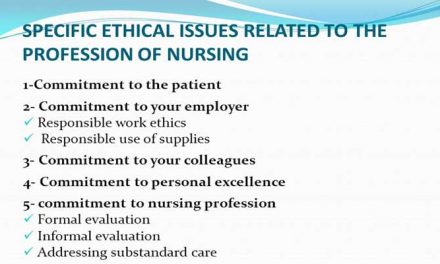A Nurse practitioner (NPs) and physician assistant (PAs) are holders of essential positions in the healthcare system. They help to address shortages in healthcare staff by routinely serving in primary and preventive care, depending on the needs of various patient populations. Their services are essential in the underserved inner city and rural regions.
Both are advanced degree holders who provide direct patient care while serving under a physician. The sophisticated nature of these roles offers one of the best opportunities for healthcare professionals who look forward to expanding the scope of practice, enjoy greater autonomy, and take on more responsibility. The salary is also higher.
The professionals in NP and PA have in recent years gained more independence, as many states are relaxing their requirements relating to collaboration and oversight by a patient. It comes as a direct response to a growing shortage of physicians at the time when healthcare demands are more than ever. There are similarities in the careers of nurse practitioners and physician assistants, but they also have many differences.
Differences between Nurse Practitioners and Physician Assistants
1. Education and examinations
NPs and PAs pursue different higher education, and they sit for different examinations. Nurses earn a nurse practitioner certification after advancing from Bachelor to a Master’s or a doctoral degree and pass the accompanying exams. Physicians must complete a master‘s degree program and follow the certification process. Both must retest every few years to maintain certification.
For instance, in the US, NPs need to recertify after every five years, but that might recertify by meeting requirements of clinical practice and Continuing education. Most states require 1,000 clinical hours and 75 CE hours. Physical assistants should recertify every 10 years and also have 100 CME credits.
2. Training period
Depending on the dedication, it takes this time to approximately 6 years to become a nurse practitioner. The first fours are to earn a bachelors degree, although an accelerated BSN program takes 12-20 months. A Masters Degree program takes two years, but those studying part-time take longer. Passing licensure exams and reaching the number of required practice hours to sit for certification exams after masters program adds to the time by around six months.
It takes about the same period to become a PA as one must obtain a masters degree for four years and a two-year master‘s degree. Most masters programs include clinical hours as one of the training requirements, but the number varies between schools. Some graduate programs allow students to earn clinical hours through an internship or established shadowing. Some students join rigorous BP-PA programs to acquire both an undergraduate and graduate at the same time.
3. Autonomy in practice
Physician Assistants practice with more autonomy. The laws of each state dictate the level of independence for PAs, although independence and autonomy might mean something different in the scope of healthcare practice. In most states, the law requires PAs to work under the form of a collaborative agreement with a medical doctor. However, PAs do very little that requires direct oversight by a physician on a day to day basis. All PAs, in this sense, spend much of their time working independently. They can even operate an autonomous PA-led clinic where a physician only visits a few times in a month.
Many states require Nurse practitioners to main collaborative agreements. NPs at such state still can work autonomously without any direct supervision although it does not make them be considered as independent practitioners. Many NPs work at hospitals as a part of healthcare. Others start private or partner practices at states that allow them independent practice status or even when they have to work with a physician.
Things are changing in countries like the USA. Half of the states now have progressive laws granting complete freedom to NPs who want to practice independently to the extent of education and training. NPs at states aligning with advanced practice registered nurses model can practice and prescribe without a collaborative agreement with a physician.
4. Center of focus
Nurse practitioners work is patient-centered while physician assistants focus more on diseases. Nurse practitioners have a long term approach when working with their patients. Allocating more time to a patient is increasingly becoming important for chronic diseases. Chronic diseases like cancer or diabetes affect more than half of the population in countries and end up causing two-thirds of all deaths. Working long term with their patients allows forming of long term health plans, providing health education, and also counseling those at risk.
Physician assistants are disease-oriented working with physicians to identify patient problems. They also collaborate to brainstorm treatments and cures. Their goal is working with physicians to make patients healthy as possible for them to get back to their usual life. However, the typical duties are almost the same except that NPs require being under an MD‘s collaboration.
Nurse practitioners also care for a particular population by specializing in specific areas such as geriatric, pediatric, or mental health. Nurse practitioners diagnose and treat illnesses or injuries but strongly emphasize preventative care as well as health promotion. These are activities they can perform with direct oversight by a physician even when they have a collaborative agreement with MDs. Physician assistants offer various services within the scope of their training that physicians can perform without direct supervision by an MD, including:
- Performing examinations
- Diagnosing illnesses and injuries
- Providing treatment plans
Also Visit: NurseApex.Com
5. Practice settings and specialties
Most PAs collaborate with a designated physician, but it is rare to work under supervision. They work in hospitals, skilled, doctor’s offices, nursing facilities, and other settings where they are part of a team comprising of MDs and other healthcare personnel. They might also work or run stand-alone clinics, work at schools, or other settings. The specialty of PAs when they are working in any of the settings centers on a specific type of disease or area or medicine. It can be emergency medicine, dermatology, or surgery.
Nurse practitioners work in various settings, but direct physicians oversight is minimal in the daily routine. They practice at hospitals, skilled nursing facilities, private physician practices, schools, and summer camps. NPs frequently establish independent NP-led clinics or partner practices with other nurse practitioners.
The time that you can allocate to education and preferred level autonomy are essential factors when choosing whether to become a nurse practitioner or physician assistant. PAs can start their career earlier after getting the masters degree and passing the certifying exam. NPs have to wait longer as some hospitals and clinics require them to have experience of a certain number of years before they start practicing.





